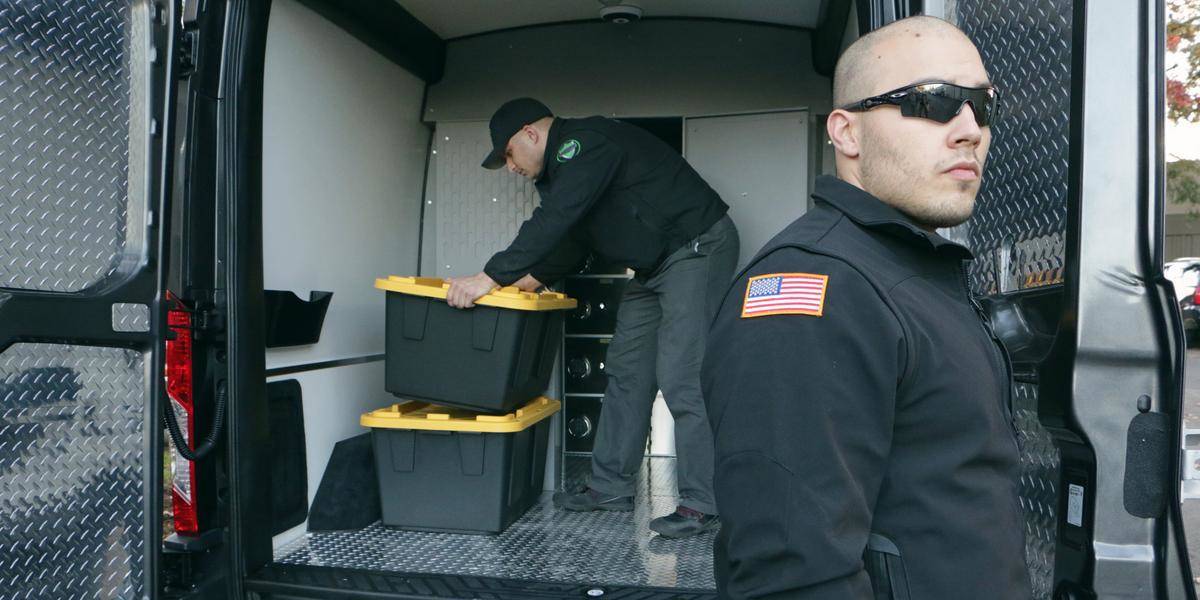Cannabis businesses operate in an environment filled with unique challenges that set them apart from traditional retail operations. With high cash flow, valuable inventory, and regulatory scrutiny, these businesses often face heightened exposure to theft, fraud, and compliance violations. Proactive risk management is critical to ensure both employee safety and long-term operational success. Security officers play a pivotal role in identifying threats, developing mitigation strategies, and implementing comprehensive safeguards across physical, operational, and regulatory domains. Many cannabis business owners also seek professional dispensary security solutions USA to establish structured programs that integrate protective measures with compliance oversight. This combination of expertise ensures that businesses can navigate the industry’s inherent risks effectively while maintaining a secure and law-abiding environment. In this article, we will explore how officers manage risks in cannabis businesses through physical security, employee management, compliance, cash handling, cybersecurity, and emergency preparedness.
Understanding Risks Specific to Cannabis Businesses
Cannabis businesses are exposed to multiple risk categories that require specialized management strategies. Physical risks are prominent due to the high value of cannabis products and significant cash holdings. Armed robbery, shoplifting, vandalism, and break-ins remain primary threats. Regulatory risks are equally challenging. Cannabis businesses operate under strict state and local regulations that govern licensing, product tracking, labeling, sales limits, and record-keeping. Non-compliance can result in heavy fines, license suspension, or permanent shutdowns. Operational risks further complicate the landscape, as employee misconduct, improper inventory management, and cybersecurity vulnerabilities can cause severe financial or reputational damage. For example, an employee with unauthorized access to products or cash could exploit gaps in security systems. Similarly, POS system breaches or ransomware attacks can disrupt operations and compromise sensitive customer data. Effective risk management requires a comprehensive approach that addresses each category simultaneously.
Security Risk Assessments
A structured risk assessment is the cornerstone of security in cannabis businesses. Officers conduct thorough evaluations of both the physical site and operational processes to identify potential vulnerabilities. Physical assessments examine entry points, storage areas, employee-only zones, customer flow, and high-value inventory locations. Officers also review the effectiveness of surveillance cameras, alarm systems, and lighting to ensure comprehensive coverage. Operational assessments analyze inventory tracking methods, cash handling procedures, employee conduct, and overall adherence to security protocols. As regulations change and businesses expand, periodic reassessments are essential to maintain security integrity. For instance, adding a new point-of-sale system or expanding store square footage may introduce new risks, requiring adjustments to the existing security plan. By proactively identifying these gaps, officers help cannabis businesses prevent incidents before they occur, safeguarding both assets and reputation.
Physical Security Measures
Physical security is the most visible component of risk management in cannabis businesses. Officers implement multiple layers of protection to deter and respond to threats. Key measures include:
-
Deployment of armed and unarmed guards to monitor entrances, manage crowds, and respond to emergencies.
-
Installation of high-definition surveillance cameras with night vision and remote monitoring to capture activity in real-time.
-
Advanced alarm systems that trigger immediate alerts to local authorities or security response teams.
-
Secure storage facilities such as vaults, safes, and reinforced rooms for cannabis products.
-
Controlled access measures, including keycard entry, PIN codes, and biometric scanners, to restrict high-risk areas to authorized personnel only.
-
Separation of public, employee, and high-value zones to minimize opportunities for theft or internal misuse.
-
Proper lighting and landscaping to eliminate hiding spots and improve visibility around entrances and exits.
These measures, when combined, create a layered security approach that significantly reduces physical threats and supports a safer working environment.
Cash Management and Armored Transport
Cash handling is one of the highest-risk aspects of cannabis operations due to federal banking restrictions that often limit access to traditional financial institutions. Officers implement structured procedures to reduce exposure, including secure cash counting, dual verification, and strict access controls. Coordination with armored transport services provides an added layer of protection, ensuring that deposits and withdrawals occur safely. Officers accompany or supervise the transport process, mitigating risks of robbery or theft. They also monitor cash storage within the facility, ensuring that high-value deposits are moved frequently and securely. By combining strict internal controls with professional armored transport services, cannabis businesses can safeguard revenue streams while maintaining compliance with both state regulations and internal security policies.
Employee Training and Internal Risk Management
Employees are critical to the success of any cannabis business but can also present internal risk if not properly managed. Officers develop training programs that cover security protocols, emergency response procedures, regulatory compliance, and best practices for cash and inventory management. Regular background checks and performance evaluations help identify potential risks early. Officers also create clear reporting channels for employees to report suspicious activity or procedural lapses. For example, employees are trained to verify customer IDs consistently, follow cash-handling procedures, and monitor for unusual behavior in colleagues or patrons. By fostering a culture of accountability, cannabis businesses reduce the likelihood of internal theft, compliance violations, and procedural errors. Continuous training ensures staff remain aware of evolving risks and prepared to respond appropriately in various scenarios.
Compliance and Regulatory Risk Mitigation
Regulatory compliance is a non-negotiable aspect of cannabis operations. Officers work closely with compliance teams to ensure that businesses adhere to all applicable laws, including state and local regulations on licensing, sales limits, inventory tracking, labeling, and reporting. They monitor inventory systems to confirm accurate product counts, track discrepancies, and ensure proper reporting to authorities. Officers also prepare staff for audits and inspections by maintaining detailed records and demonstrating adherence to protocols. Proactive monitoring prevents regulatory violations that could result in fines, license suspension, or reputational damage. By integrating compliance oversight into day-to-day security management, officers provide cannabis businesses with a dual layer of protection—guarding both physical assets and legal standing.
Cybersecurity and Data Protection
Cybersecurity is an increasingly important aspect of cannabis business security. Officers implement a range of measures to protect sensitive information, financial data, and point-of-sale systems from cyberattacks. Key strategies include:
-
Encryption of customer and financial data to prevent unauthorized access.
-
Use of firewalls and secure network protocols to block malicious activity.
-
Multi-factor authentication and strong password policies for all employees.
-
Regular monitoring for phishing attempts, malware, and ransomware attacks.
-
Employee training on safe digital practices and identifying suspicious communications.
-
Routine software updates and patches to address vulnerabilities.
Integrating digital protections with physical security measures creates a comprehensive defense that ensures all facets of the business are safeguarded. Cybersecurity protocols also maintain customer trust and prevent operational disruptions that could lead to financial or legal consequences.
Emergency Response Planning
Preparedness is critical for responding effectively to emergencies in cannabis businesses. Officers develop tailored emergency response plans for scenarios such as armed robbery, medical incidents, fire, or natural disasters. These plans outline staff responsibilities, evacuation procedures, and communication protocols. Officers coordinate with local law enforcement and emergency services to ensure rapid response when incidents occur. Regular drills and simulations train employees to respond calmly and efficiently under pressure. A well-prepared response plan minimizes harm, reduces downtime, and ensures the safety of both staff and customers. By anticipating potential emergencies, officers provide cannabis businesses with the tools and training needed to act decisively in critical situations.
Monitoring and Reporting
Continuous monitoring and accurate reporting are essential components of risk management. Officers maintain daily security logs, track incidents, and review surveillance footage for signs of suspicious behavior. Data-driven monitoring helps identify recurring patterns, security gaps, or operational weaknesses. Officers analyze this information to recommend improvements in protocols or procedures. Combining human oversight with technology, such as analytics software and remote monitoring, enhances risk detection and prevention. Consistent reporting also ensures accountability at all organizational levels, from employees to management, and provides documentation for regulatory audits or law enforcement investigations.
Red Flags and Warning Signs
Recognizing early warning signs is a critical function of security officers. Suspicious customer behavior, such as large cash transactions without proper identification, may indicate fraudulent activity. Internally, gaps in procedures, inconsistencies in inventory records, or employees bypassing security protocols can signal potential theft or compliance violations. Officers are trained to respond to these indicators promptly, investigating potential issues before they escalate. Proactive observation reduces the likelihood of significant financial loss or legal repercussions. Identifying risks early allows businesses to implement corrective measures, ensuring safer operations and stronger compliance.
Conclusion
Cannabis businesses operate in a highly regulated and security-sensitive environment. Officers manage risks through a combination of physical security, cash handling, employee training, compliance oversight, cybersecurity, and emergency preparedness. Their role ensures that businesses are protected from theft, fraud, and operational disruptions while maintaining compliance with local and state laws. Effective risk management not only safeguards assets and employees but also reinforces the company’s reputation and long-term viability. Partnering with trained officers and professional security teams is essential for cannabis business owners seeking a comprehensive approach to safety, compliance, and operational resilience. Investing in risk management is not optional—it is a strategic necessity that enables cannabis businesses to thrive securely and responsibly.
FAQs
Why is risk management critical for cannabis businesses?
Cannabis businesses handle high-value products and cash while facing strict regulations. Risk management ensures employee safety, regulatory compliance, and protection of assets.
How do officers prevent theft in cannabis businesses?
Officers use armed and unarmed guards, surveillance systems, secure storage, and controlled access to minimize theft risks. Risk assessments help identify vulnerabilities.
What steps are taken to ensure compliance?
Officers monitor inventory, sales, and reporting systems to comply with state and local laws. They also assist in audits and prepare staff for regulatory inspections.
How do cannabis businesses protect against cyber threats?
Implementing encryption, firewalls, multi-factor authentication, employee training, and regular software updates helps prevent data breaches and ransomware attacks.


